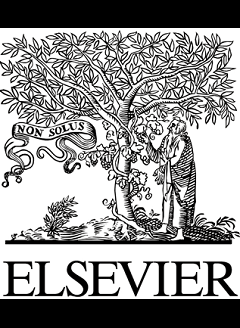دانلود رایگان مقاله رهبری و تحرک تغییر: نقش واسطه ای رهبری توزیع شده – سال 2020


مشخصات مقاله:
عنوان فارسی مقاله:
رهبری و تحرک تغییر: نقش واسطه ای رهبری توزیع شده
عنوان انگلیسی مقاله:
Leadership and change mobilization: The mediating role of distributed leadership
کلمات کلیدی مقاله:
رهبری، جهت گیری های فرد و وظیفه محور، تغییر سازمانی، رهبری توزیع شده
کلمات کلیدی انگلیسی:
Leadership – Person- and task-centred orientations – Organizational change – Distributed leadership
مناسب برای رشته های دانشگاهی زیر:
مدیریت
مناسب برای گرایش های دانشگاهی زیر:
مدیریت کسب و کار
وضعیت مقاله انگلیسی و ترجمه:
مقاله انگلیسی را میتوانید به صورت رایگان با فرمت PDF با کلیک بر روی دکمه آبی، دانلود نمایید. برای ثبت سفارش ترجمه نیز روی دکلمه قرمز رنگ کلیک نمایید. سفارش ترجمه نیازمند زمان بوده و ترجمه این مقاله آماده نمیباشد و پس از اتمام ترجمه، فایل ورد تایپ شده قابل دانلود خواهد بود.
فهرست مطالب:
Abstract
Graphical abstract
Keywords
1. Introduction
2. Theory and hypothesis development
2.1. Mobilizing as a key driver for enactment of planned organizational change
2.2. Individual leadership and change mobilization: Definitions
2.3. Person- and task-centred orientations and mobilizing: Hypothesis development
2.4. Distributed leadership defined
2.5. Person- and task-centred orientations and distributed leadership: Hypothesis development
2.6. Distributed leadership and change mobilization: Hypothesis development
3. Method
3.1. Sample and procedure
3.2. Measures
3.3. Data analysis
4. Results
4.1. EFA for the distributed leadership orientation scale
4.2. Descriptive statistics
4.3. Measurement model
4.4. Testing of the hypotheses
5. Discussion
6. Limitations and future research
7. Conclusions
Acknowledgments
References
قسمتی از مقاله انگلیسی:
1. Introduction
Organizational change continues to be a key challenge for management (Burnes, 2004; Pasmore, 2015). Scientific investigations have provided insights into and understandings of change processes, change management, change leadership, and leadership of organizational change and development efforts. Various typologies and concepts have been identified and empirically studied (Burke, 2013; Burnes, 2004; Greenwood & Hinings, 1996), and recent literature has focused increasingly on the concept and processes of change management, and factors contributing to its success (Stilwell, Pasmore, & Shon, 2016). Among the drivers of planned change identified in the literature (e.g. Battilana, Gilmartin, Sengul, Pache, & Alexander, 2010), mobilizing – meaning activities that enable leaders to activate the resources and processes necessary for change to actually occur – plays a crucial role. In fact, organizational members can develop the capabilities needed to successfully engage in new ways of doing things through mobilizing activities (Huy, 1999). Therefore, it is important to understand the factors affecting these drivers.



